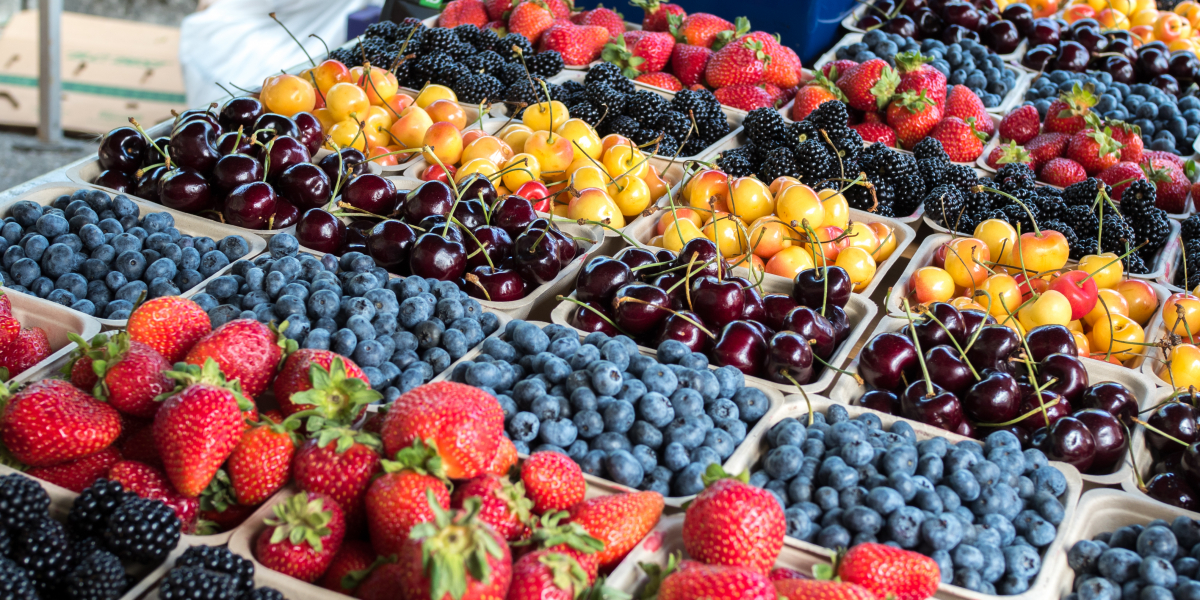
July 31, 2025
By: The Smart Prosperity Institute’s Sustainable Agriculture Team
Local food sales are an important driver of regional economies, contributing more than $5 billion in 2022 alone. With demand for local, made-in-Canada food poised to increase, we need to consider how we support the development of resilient, regional food systems across Canada.
This August 2nd, on Food Day Canada, we celebrate the farmers, fishers, food processors, scientists and others in our food system who bring Canadian products to our tables. As we reflect on food in Canada, we think about our role in the system and how our research can support and advance local, resilient food systems from coast to coast to coast.
Canada's food system—how we produce, harvest, process, distribute, sell, consume and discard food—is the cornerstone of our society. Recent changes in U.S. politics have reminded Canadians of the importance of having easy and affordable access to locally sourced food, and have sparked a renewed interest in made-in-Canada products.
Nearly half of Canadian consumers surveyed in a recent PwC consumer report identified domestic sourcing as their top sustainability priority when purchasing food. Ongoing political tensions are also encouraging consumers to change their buying behaviours, replacing imported goods with more domestic products, according to an Angus Reid survey.
Well before the trade wars, public health and transport infrastructure disruptions, such as the Canadian National Rail strike last summer, showed us that a long, complex food supply chain is vulnerable to these kinds of events. Consultations around the Sustainable Agriculture Strategy have also highlighted the disappearance of local and regional food infrastructure, like abattoirs and grain terminals. This has increased our reliance on longer and sometimes transnational supply chains to process, store and distribute our food.
Despite significant challenges, such as regulatory barriers, low consumer access and limited regional infrastructure, markets for local food are growing in Canada. Farmers reporting direct sales activities increased between 2015 and 2020, with on-site farm stores, kiosks, u-picks, direct deliveries to consumers and farmers’ markets taking the top spots. In 2022, close to 15,000 farms reported selling food locally (e.g., within 50 km of their operation), representing about $5.3 billion in sales. Farmers are motivated to sell food locally because they get to connect with consumers, to build consumer trust, and, on average, have better margins than sales through other market channels, such as retail and distribution chains.
Some Canadian consumers are willing to pay a premium for high-quality, local products, according to PwC’s Voice of the Consumer survey. These preferences are driven by a stated desire to support local economies and the sentiment that local food is higher quality, fresher and more environmentally conscious. However, affordability remains a key determinant of purchasing decisions for the majority of Canadian consumers.
Inflationary pressures remain prevalent, even in local food systems; but, some local food channels, like farmers' markets, have been shown to more readily absorb these pressures when compared to chain grocery stores. While this preserves community access to affordable food, it can come at an additional financial risk for farmers, who may experience lower profits during times of market volatility.
While recent events have reignited national pride for Canadian products, trade isn’t the only issue. We also need to think about how we can better support flourishing, regional food systems.
Farmers are struggling to adapt their businesses to a changing climate that’s bringing on more extreme weather and wreaking havoc on crop yields and profits. Resilience to these weather events are top of mind. Along with geopolitical events and infrastructure disruptions, we’re seeing the vulnerabilities in our food system. We must ensure that our local food systems develop in a resilient way to secure their long-term success. Given the differences between regions, communities and production systems, a place-based approach is best.
Research on food systems is complex and interconnected, which is why our research takes a multi-faceted, systems-level approach. While some of our work focuses on adaptation opportunities and risk reduction, we also consider the workforce and skills needed to grow value-added product sectors, like plant-based proteins. We also explore how to integrate circular principles into the food system, like turning waste into useful byproducts. Our research complements ongoing initiatives to strengthen regional food systems by identifying opportunities to build resilience, improve sustainability and support local food economies.
Important efforts are underway to enhance and expand regional food systems across the country. Several researchers and organizations have called for renewed investments in local food infrastructure to reduce bottlenecks and reverse trends in infrastructure loss, such as shared processing areas and regional food hubs. Just this year, Agriculture and Agri-Food Canada renewed its investment into the Local Food Infrastructure Fund, which aims to strengthen local food security through making local food more accessible. Other groups have called for easing market access requirements to improve distribution of local foods, reducing inter-provincial trade barriers so it’s easier to trade between provinces rather than other countries, promoting agri-tourism and developing targeted programs and incentives that encourage the use of local food channels, like farmers markets.
Building strong and resilient regional food systems in Canada requires us to not only respond to today’s disruptions but also prepare for future challenges. As we celebrate Food Day Canada, let’s continue to support the farmers, processors, retailers and other actors that make local food possible. By investing in research, infrastructure, market access and innovation, we can ensure that regional Canadian food systems remain sustainable, adaptive and thriving.